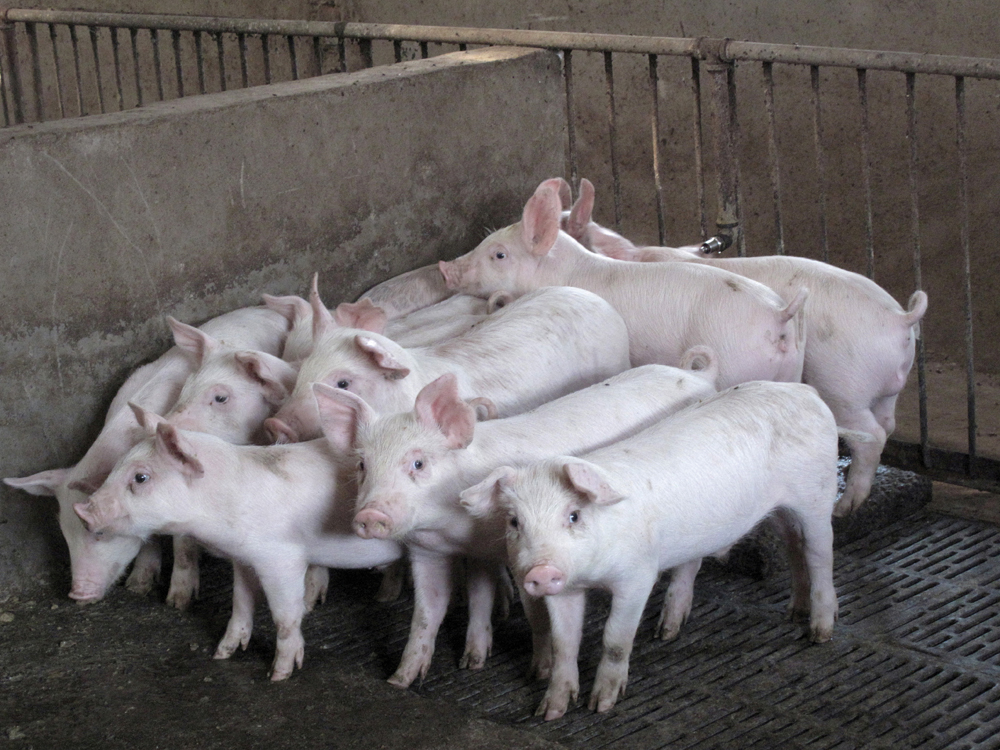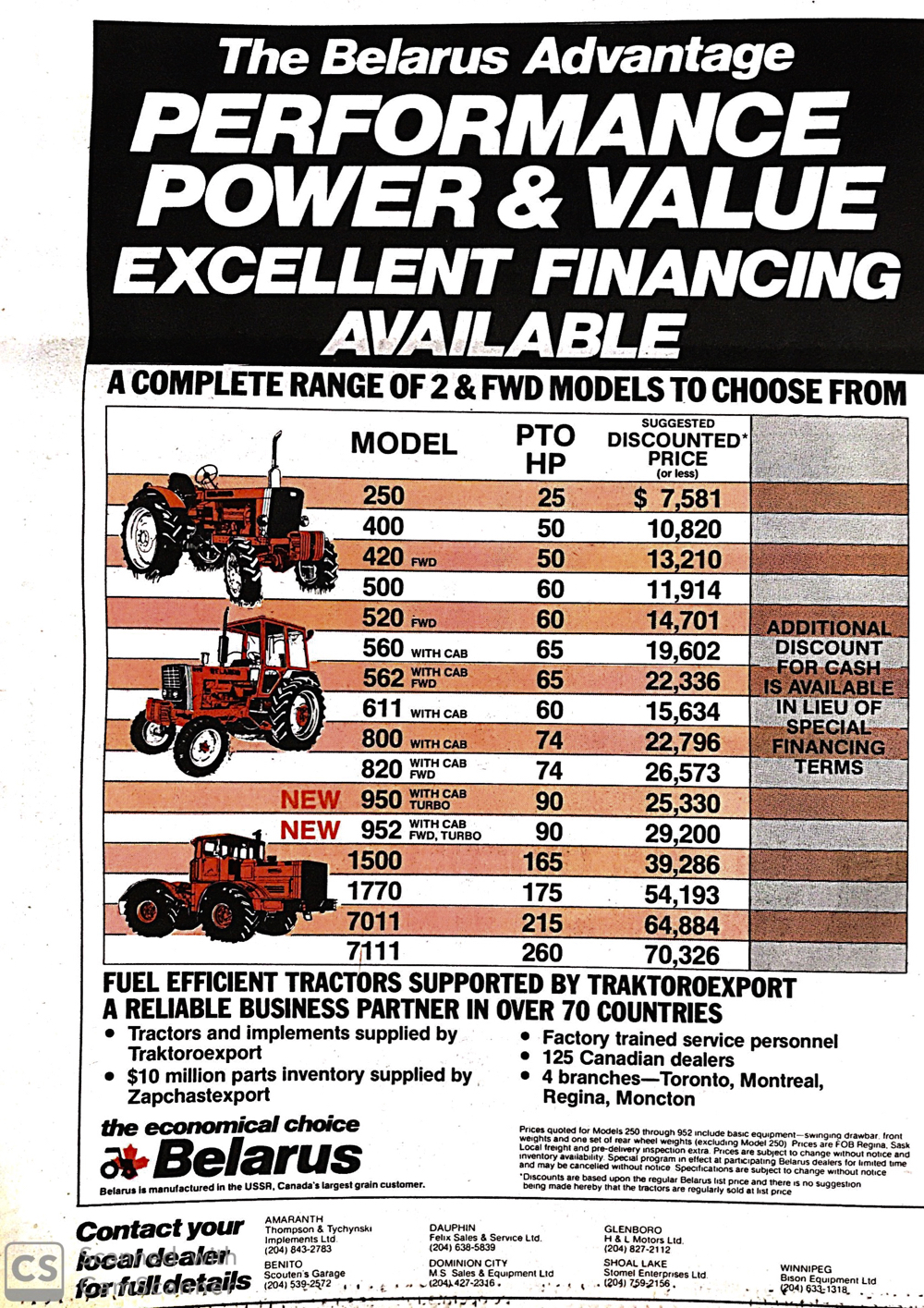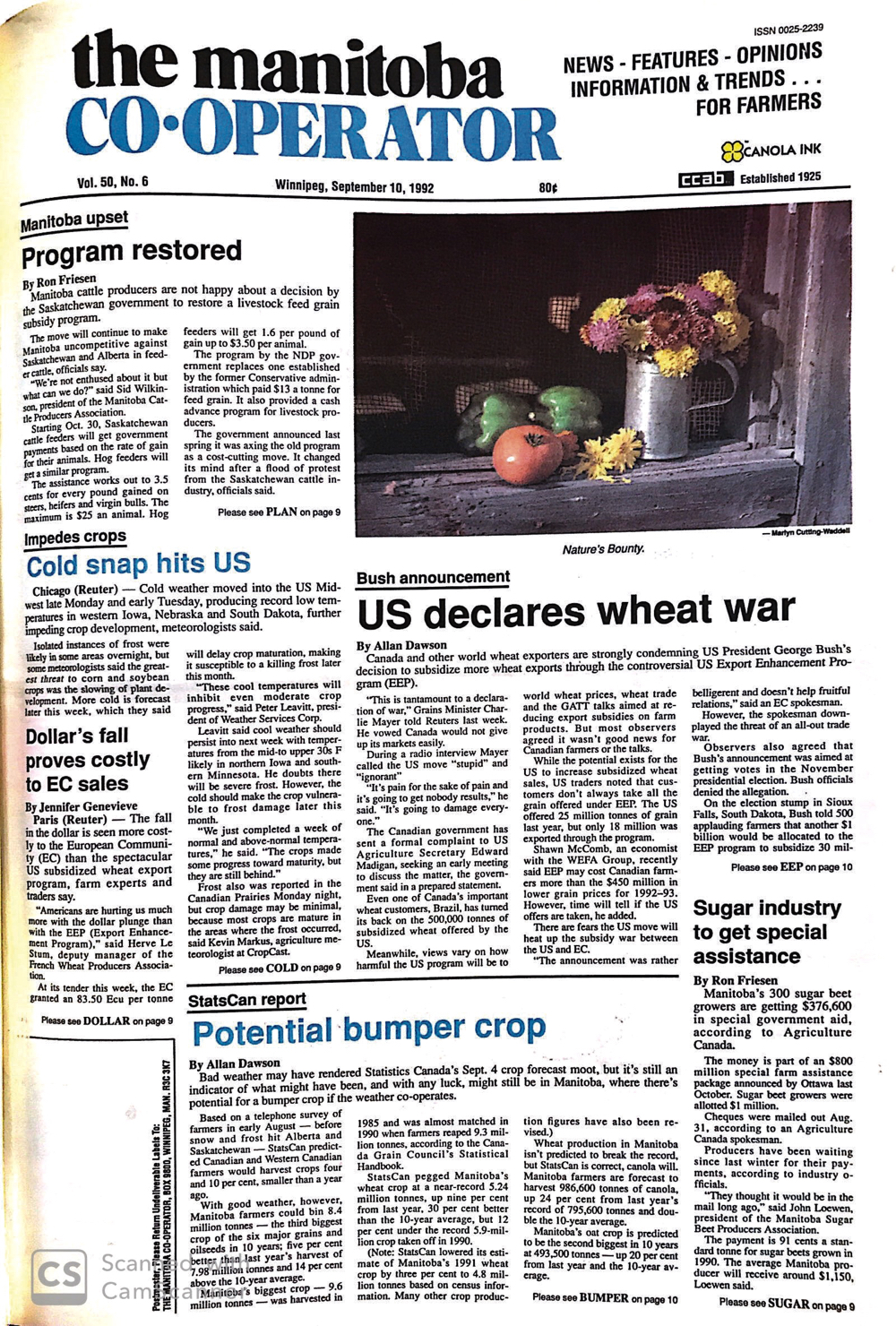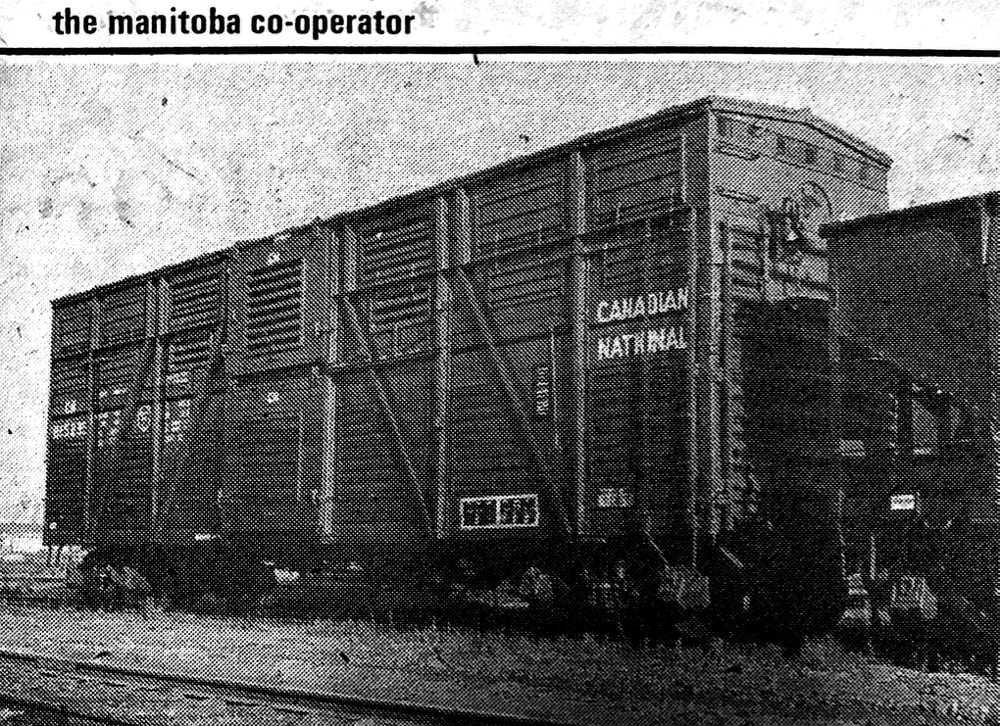In April 1947 the Brewing and Malting Industries of Canada were encouraging production of higher-quality barley through a contest offering total cash prizes of $18,750 plus 120 awards of 10 pounds of seed for “Sensational new Montcalm barley.” The text later in this ad from our April 15 issue notably said that malting barley was used in a “wide range of products for home, farm, industry — in foods, drugs and general articles.” Beer was not mentioned.
The issue contained extensive text of a response by Premier Stuart Garson to an Opposition MLA’s resolution that Manitoba Pool should repay $1.3 million that the province had given it during the financial crisis in 1930. The premier opposed the request from Winnipeg MLA George Thorvaldson, as did the editor in his editorial that issue, which also disputed an advertisement that Thorvaldson had run in a Winnipeg newspaper. He noted that Thorvaldson had “been a member of the Winnipeg Grain Exchange since 1920 and could hardly be free of bias.”
Read Also

Do the math on replacement heifers
Beef farmers should know what it costs them to raise a replacement heifer and, based on that, decide the best replacement strategy to grow both their herd and their profits.
In an interesting parallel with today’s “fake news” controversy, a short piece alongside the editorial called for the need to recognize propaganda. “But to do this we must have access to the facts — facts on both sides of every important question. This is the only way we can keep democracy alive.”
Propaganda had been a big concern in wartime, and rationing was still having an effect. The Sugar Administration for Canada advised that while there was some improvement, supplies were still short. Beekeepers whose bees were likely to suffer from a sugar shortage were advised to write to their provincial apiarist for a sugar permit over and above the normal allowance of five pounds per colony.
The issue carried an announcement that Skyways Air Services of Winnipeg had purchased two Bell Model 47 helicopters for uses including crop dusting. Among the advantages claimed for the chopper was the downdraft which forced dust into the crop.



















